Wool market opens 2026 with best first-week result since 2011
The Australian wool market has returned from the Christmas recess with a powerful start to the calendar year, delivering sharp gains across most...
2 min read
 Natasha Lobban
:
Feb 22, 2024
Natasha Lobban
:
Feb 22, 2024
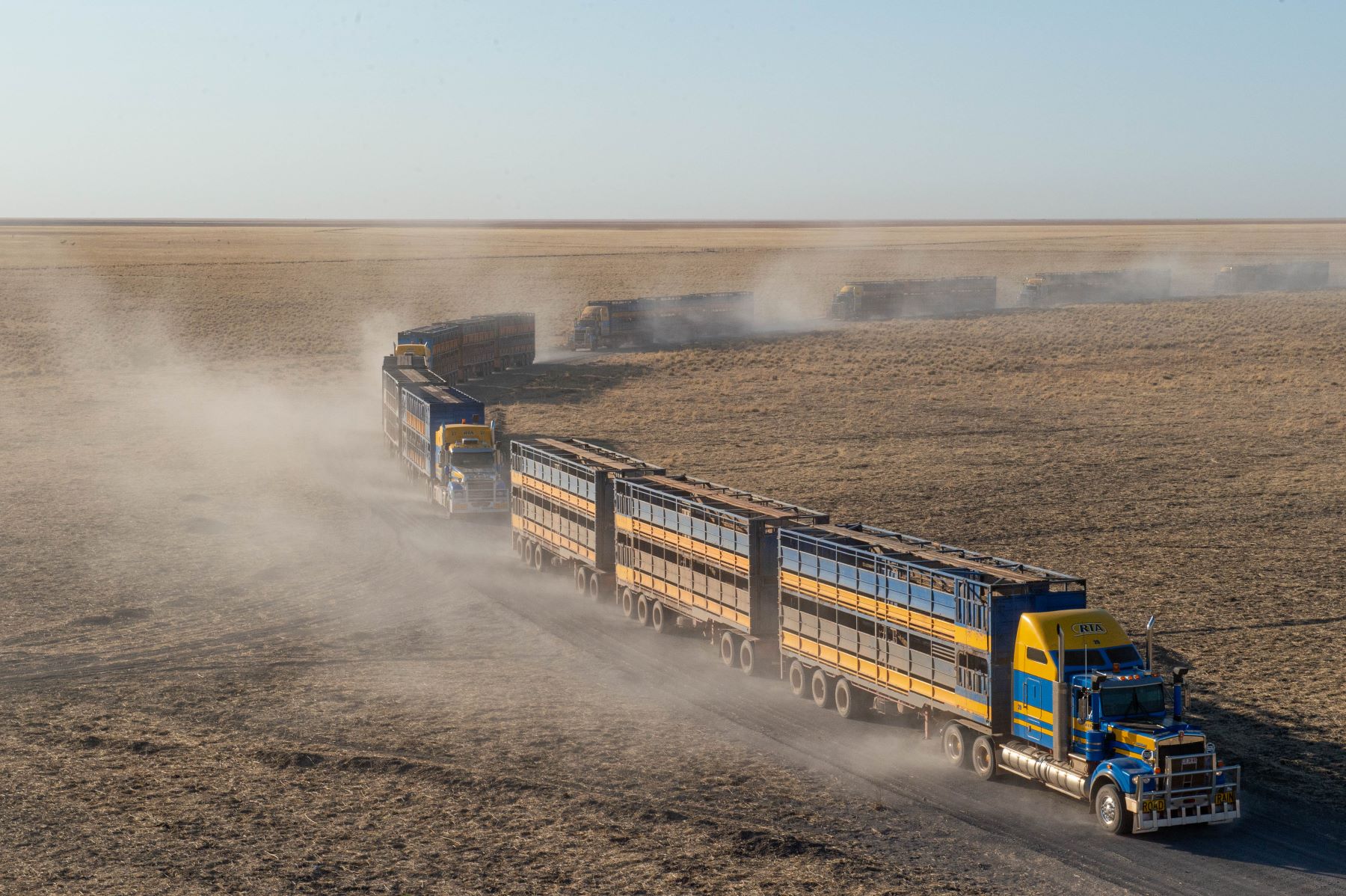
There’s been a sharp increase in the number of livestock being transported from Western Australia to the Eastern States in recent months as dry weather and market disruption continues to degrade the WA market.
Department of Primary Industries and Regional Development, Western Australia, records show that in January 5,800 cattle were transferred east from WA.
This was a 15% increase on the 5,000 in December 2023.
It was a 522% increase compared with the 900 trucked east in November 2023.
It was also the highest monthly total since December 2022.
The 2023-24 (July-January) total is sitting at 12,600, which is a 55% reduction compared with 27,800 at this time last year.
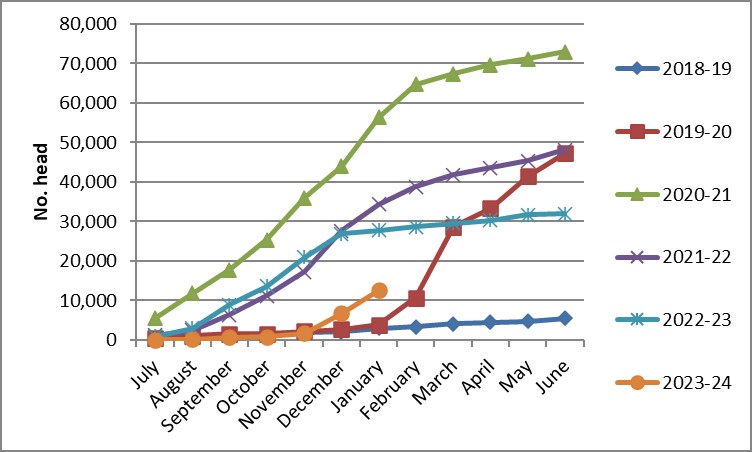
Cattle transferred east from WA. Source: Department of Primary Industries and Regional Development, Western Australia.
Meanwhile in January 104,500 sheep and lambs were transported east from WA - 41% of these were lambs and 59% were adult sheep.
This was a 201% increase compared with 34,700 in December and the highest monthly total since November 2022.
The rapid increase in January brings the 2023-24 (July-January) total to 211,400, which is significantly less than the 330,100 at the same time last year.
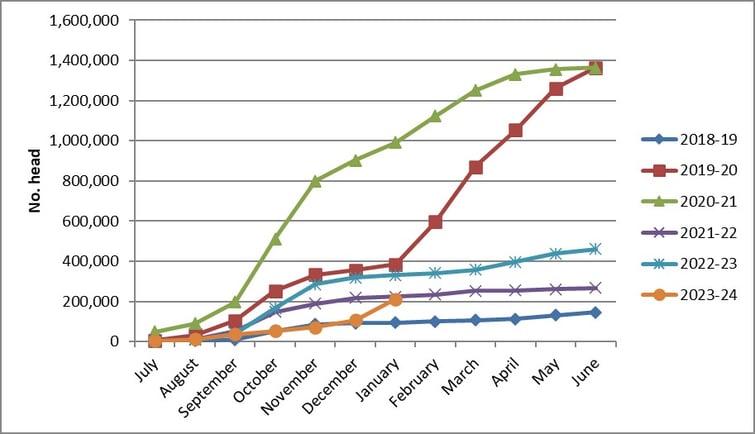
Cattle transferred east from WA. Source: Department of Primary Industries and Regional Development, Western Australia.
At 1pm Thursday the Eastern Young Cattle Indicator (EYCI) was sitting at 627.42 while the Western Young Cattle Indicator (WYCI) was 362.53 - indicative of the massive price disparity across the country - now sitting at 264.89c/kg and giving the Eastern States a 58% premium in this category.
READ MORE: Eastern buyers eyeing heavily discounted WA cattle
There isn’t a similar direct comparison indicator for sheep, however sheep and lamb indicators were all today showing significant disparities of price for the WA market when compared on a state-by-state basis.
The Restocker Lamb Indicator was significantly higher than WA for all states other than Tasmania, which had a sudden drop of almost 200c/kg.
With the Trade Lamb Indicator WA was outperformed by all states, except Queensland.
The disparity was particularly prominent in the mutton indicator which was sitting a 249.55c/kg nationally but just 100.08c/kg for WA, with the national indicator 149% better off.
It is this disparity that is enticing Eastern farmers to truck livestock East, where many are enjoying a good season.
One Riverina farmer APlus News spoke to said he had trucked six road trains of Merino ewes across the Nullarbor in the past few months.
He was targeting younger ewes, aged one to three years old in good forward condition, straight from the paddock.
It’s a strategy he’s used in the past when the price is right – usually when Eastern States prices are high or the conditions in WA are off.
It was the latter that be believed was driving the push East.
He said the Riverina had been experiencing a pretty good season compared to WA.
“One area I bought from hasn’t had rain since September last year,” he said.
When considering trading stock from WA, the farmer said he calculated $35-40 freight per ewe.
A road train holds eight decks of livestock, which in the case of his young ewes normally equates to 700-800 head depending on their size.
“The sheep we buy have to be in very good order,” he said.
The roughly 3500km journey, depending on their home farm location in WA, includes spelling them for 12 to 18 hours halfway for welfare purposes.
They rest, are fed hay, and are offered an electrolyte drink to ensure hydration.
He said they were also really careful about choosing when to bring the sheep over, for example they wouldn’t load during a heat wave.
This farmer said he had heard of a lot of agents bringing sheep out of WA.
The practice is expected to continue while the price disparity makes it an attractive proposition for farmers.
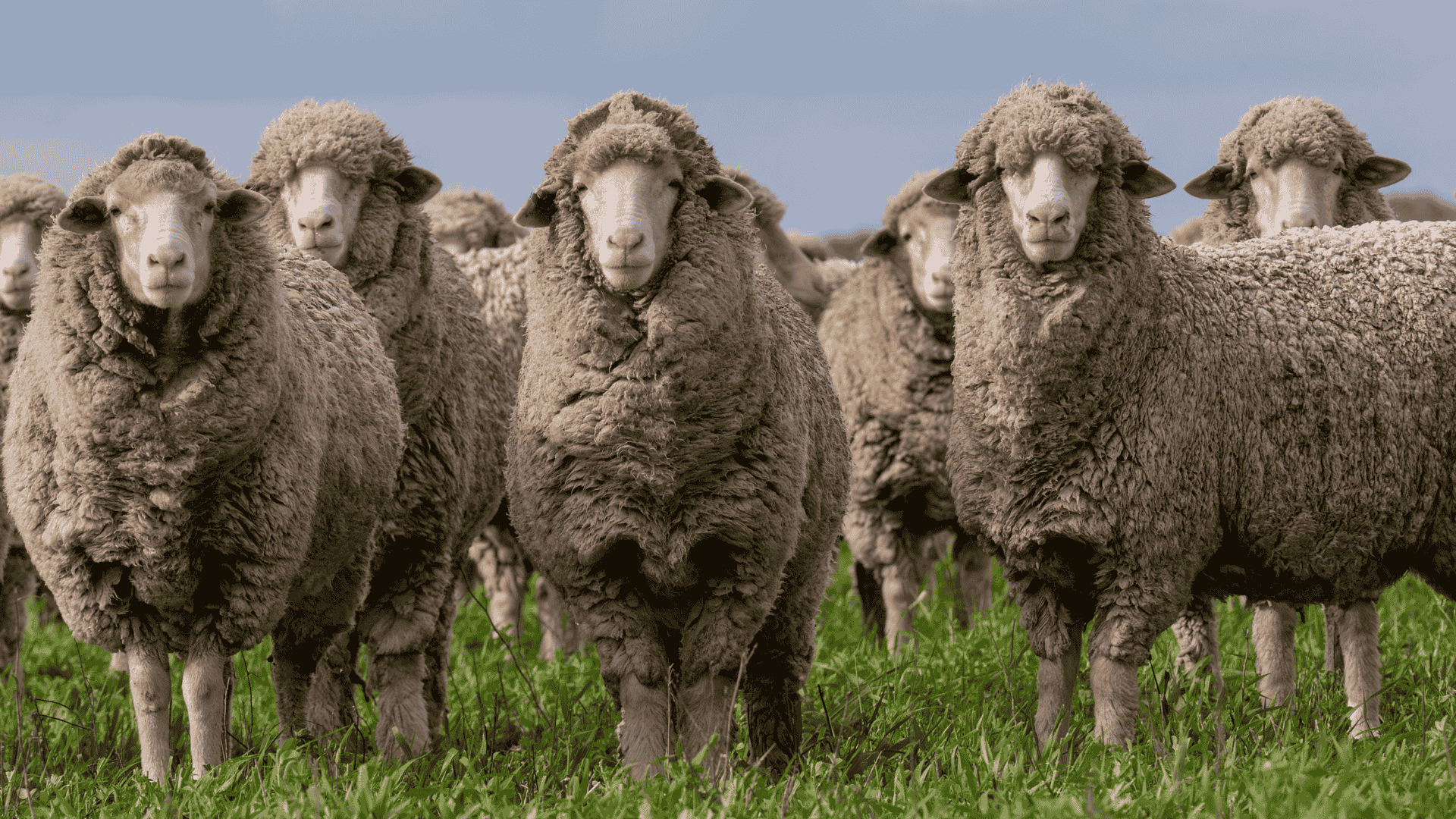
The Australian wool market has returned from the Christmas recess with a powerful start to the calendar year, delivering sharp gains across most...
.png)
The introduction of China’s beef safeguard tariff in 2026 has sharpened the focus on where exposure sits within Australia’s beef export sector. Using...
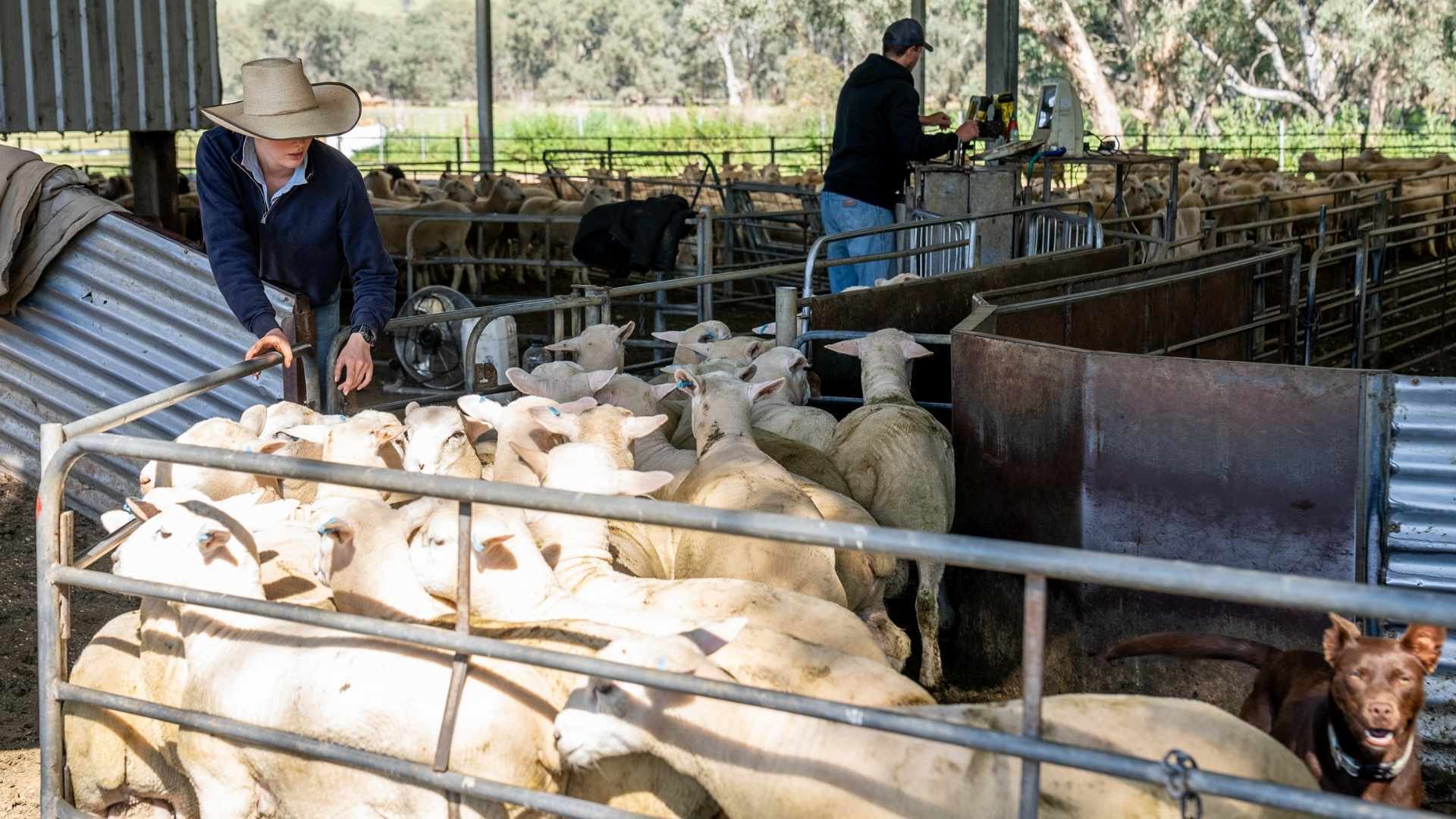
Lamb prices reached unprecedented levels in 2025, with the Heavy Lamb Indicator peaking at 1,245¢/kg carcase weight (cwt) in August. The key question...